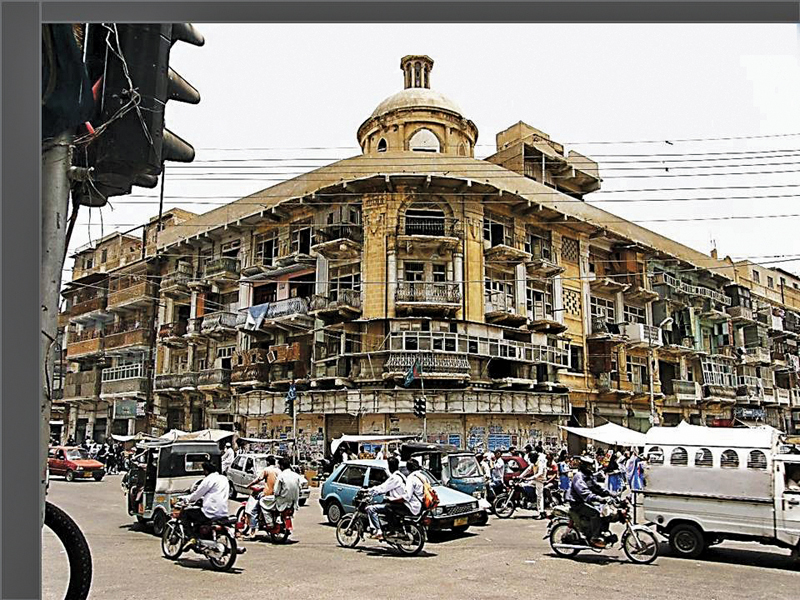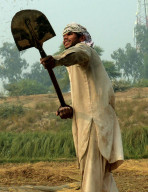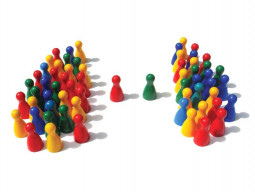
Given that Karachi is in desperate need of urban renewal, following the example of the ‘Times Square Business Improvement District’ may be just what it needs. Karachi’s urban downtown, which houses most of the city’s heritage sites and was once considered its cultural and recreational soul, is in a terrible state of decay. Heritage structures and monuments are fast disappearing owing to environmental pollution, employment of functions incompatible with their preservation needs, change of land use, etc. We need to focus on ‘problem solving’ and ‘out-of-the-box’ thinking.
Urban renewal is not only a project but a multi-dimensional process. It is important to understand that it is a state-authorised, redevelopment and finance programme, but it can only succeed if it has the participation and partnership of a range of stakeholders, such as businesses, civil society groups and communities.
The Times Square model
The Times Square model of successful downtown urban renewal - an example of a public-private partnership between businesses and the city government of New York - can be implemented in Karachi with suitable adaptations.

The area was developed with the building of the subway in 1904. The New York Times moved there, giving the square its name, and soon a number of theatres also cropped up on 42nd Street. However, by the 1950s, the area had lost its status as one of New York’s premiere entertainment centre after movies, radio and then TV became the more popular forms of entertainment.
By the 1970s, the once vibrant and beautiful theatres had become home to burlesque shows and pornography. Drugs and crime became rampant so tourists and customers avoided the area. This state of affairs existed till the end of the 1980s.
It was then that the private property and business owners of the area decided they could no longer depend only on the state government to revitalise the area. A committee was formed by the representatives of major industries at Times Square who drew up a plan for a Business Improvement District (BID). The committee developed a plan that outlined the proposed boundaries, services and improvements and methods of assessment. They also reached out to the residents and got them involved in the process.
In July 1991, Mayor David Dinkins signed a five-year contract to establish the Times Square BID. The BID, an independent, non-profit organisation, became a contractor to the city providing supplementary services in exchange for the city mayor’s power of tax assessment.
The most important task was to remove the negative image of Times Square that was the major obstacle to bringing people and economic activity back to the area. A massive promotional campaign was started, which included the New Year’s Eve celebrations at Times Square, the falling ball and the countdown that continues till date. The theatre industry was revived and promoted. Crime in the area dropped by over 50% between 1993 and 1998 and property values rose. Very soon into the programme, hotels started reporting up to 85% occupancy rates.
Copy and paste?
Though the requirements of Karachi’s downtown revival may not be the same as the case of Times Square, there are several lessons to be learned here. Most importantly, businesses can take the initiative, given there is enough legislative space and government sanction. There is a need to ensure all stakeholders participate and there is open communication between a BID-type entity and the government.
Do we not have a downtown heritage and other city zones worth revitalising? Do we not want the resulting economic benefits? Do we not want different sectors of the society working together for the larger good of the city? Do we not have a vibrant business and civil society presence in the city? Then what is stopping us from thinking of and implementing such models? A beginning could be made by establishing an urban renewal authority that works under the larger mandate of the city government, frames legislations and forges relevant partnerships.
The writer is an urban planner and runs a non-profit organisation based in Karachi city focusing on urban sustainability issues. He can be reached at fanwar@sustainableinitiatives.org.pk
Published in The Express Tribune, April 7th, 2014.
COMMENTS (21)
Comments are moderated and generally will be posted if they are on-topic and not abusive.
For more information, please see our Comments FAQ



































































I thought about this idea after I had seen Times Squares and people started making fun of it...... I heard comments like "Saddar aur time square".....In fact, there are quite a few international places which could be compared with different places/cities of Pakistan. These international destinations are just modified versions of our places and could be used as examples by the town nazims/administrators.Moreover, the public-private partnership concept would be an excellent initiative to implement this program.
Most of Old Ruling Sindhis will never develop Sindh including Karachi . They do not know how to govern .They need money ,Kick back .
If MQM chief minister is there they will be more development than Lahore because they like to develop all Sindh .
You have seen Mustafa kamal work . He planted million of same type plant so Karachi is green now .
MQM has man power devoted , people will give them Billion rupees for development .
This is actual ground reality my friends .
It wasn't just economic development that led to Times Square's renewal, but a massive increase in law enforcement. Times Square is now a happy and very crowded place.
Yet...rather than creating a high-density, high-rent area of extraordinary profitability to developers, I wonder if Karachi wouldn't be better served by increasing the amount of green space and parks available to its citizenry. It is these wonderful features of New York City, available free to the masses, that make its over-crowded public places tolerable.
Karachi has a lot of potential. All that is needed is someone to guarantee the law and order situation, rest of the things will fall into their place.
Karachi should develop a waterfront skyline and beach resort like a lot of coastal metropolises.
A massive, cosmopolitan city like Karachi needs greater autonomy - the parties that win the election in their areas need to have decision-making power to get things done in their constituencies, not the provincial govt (who are, let's face it, beyond hopeless and don't intend to change anytime soon). This will bring down turf violence significantly and promote leadership by performance - people who see areas under a competent govt doing well will want the same party to win from their area. But sadly, any mention of local govt or a more autonomous Karachi raises idiotic cries of separatism and false patriotism.
In a city with no mayor . Thankyou bilawal and PPP for destroying karachi . Blame MQM all u want but karachi desperately needs a mayor.
If its possible than my dreams comes true.
Karachi is governed by those who have no stake in the city, except their residences in DHA. People of Karachi remain unconcerned from its affairs - while their city is raped by those from other areas.
@Tabish Bilgrami: i wud blame the people of karachi in particular and sindh in general to have not voted for pmln!and thats why they dont have a good developing city
Not possible until political activists and other criminals stop taking bhatta from Karachi businessmen
Having spent a year in Karachi working for a leading Bank - without bothering to read any further - the headline of this article is the funniest thing ever. Touch your feet on the ground my friend.
@ Mumtaz Ali
People living in Lahore should also see the amount of Budget which Lahore is getting as compared to Karachi, When Karachi got its due share and had a visionary person (Mustafa Kamal), Karachi was developing faster than any other Metropolis.
Sincerity is the first Brick .. afterwards you can see the miracles here ..
Karachi is a city which is polluted and corrupted by everyone as their right and there is no one who owns Karachi. So we need to find the true stakeholders of the city and then it will be possible. Karachi has every potential to be far better and stable than the entire Dubai or any other place in the world, but the people living in Karachi should think and feel the pains of its problems.
Karachi, its administration and decision makers should visit Lahore and see how Lahore is transforming into a beautiful metropolis. MM Aalam road has become Lahore's Oxford street. Lahore has become greener and cleaner. They have also started to preserve historical building (English Tea House one example) and I have heard they have some sort of plan for the Mall Road. Karachi has more potential than Lahore but its a pity it does not have the right people.
salute the good intentions but the idea is far-fetched.
burnes road ---> time square. Yeah, right.
Great article. This is exactly what Karachi needs. The beautiful historical buildings if restored will bring out Karachi's distinct character. Anyone can construct soulless steel and glass towers, however preserving Karachi's past will add to its uniqueness as an Asian city, and let its resident's take pride in the glorious history of what used to be one of the most beautiful cities in Asia.
While there is no doubt that there much to be done for Karachi - the real question isn't what precisely needs to be done rather who's supposed to do it.